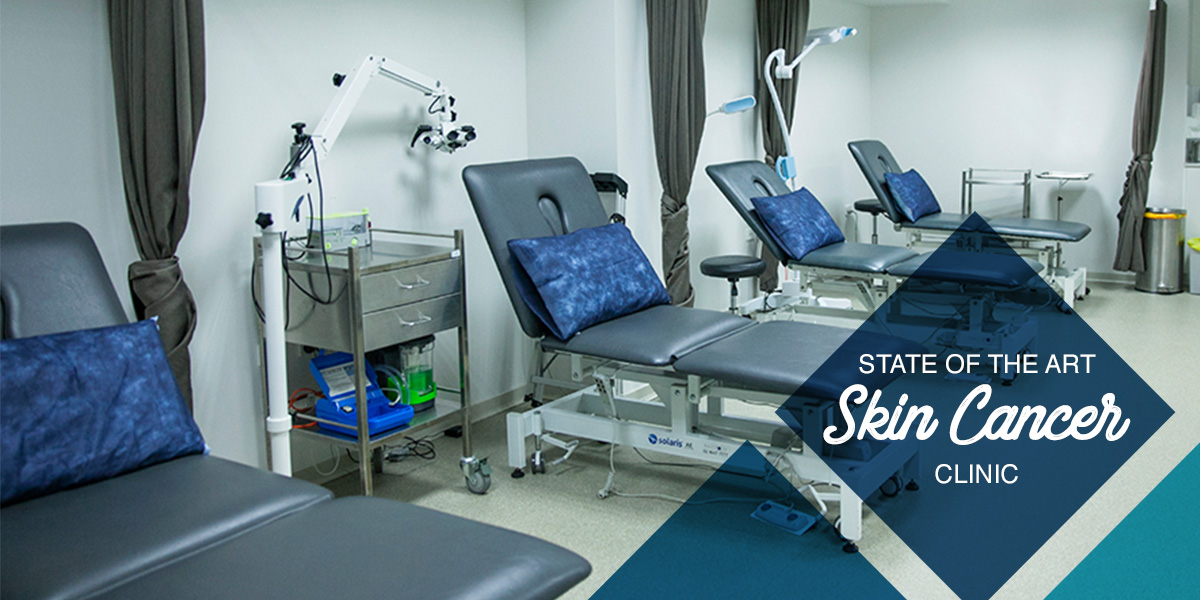Results of this test can help the doctor determine whether the patient suffers from obstructive
or restrictive lung disease so they can decide on appropriate management.
or restrictive lung disease so they can decide on appropriate management.
Spirometry Test
Spirometry is a key tool in respiratory care that plays a pivotal role in diagnosis, treatment planning, and ongoing management of lung conditions. By conducting a spirometric analysis, our doctors can get a clear picture of how well a patient’s lungs are working. This information provides us with insight into their overall lung health, helps us decide on the most effective treatments, and aids us in making sure patients stay as healthy as possible.
If you feel a noticeable change in your lung health or experience symptoms such as difficulty breathing, frequent cough, or the presence of phlegm or mucus, talking to your doctor is the best place to start.
What is Spirometry Testing
Spirometry is a breathing test used to identify any respiratory condition present in the lungs. It measures the amount of air and the speed at which you can breathe in and out.1 It also tells us how strong your lungs are and if they’re performing at their expected level of function.
Spirometry screening is generally used to diagnose asthma, chronic obstructive pulmonary disease (COPD), and other lung conditions. It may also be used by doctors to monitor your lung condition and check how well the treatment is working.2
What to Expect in Spirometry Testing
2. Introduction to Equipment
Spirometer:
- A device used to measure the volume and movement of air coming in and out of the lungs
Mouthpiece or Nose Clip:
- Helps ensure the accuracy of the results by preventing air leakage through the nose
Calibration Syringe:
- Ensures that the spirometer device is functioning correctly and accurately
Computer or Recording System:
- Records and analyses the data
3. Calibration:
Our trained technician performs a calibration check to ensure that the spirometer accurately records the lung volume capacity and airflow measurement, providing reliable and precise respiratory assessment results.
4.Baseline Measurements:
Our GP will measure your height and weight as part of the pulmonary health assessment. Your basic vital signs will also be recorded, including your heart rate, blood pressure, and temperature to help us in interpreting your lung function evaluation results. We may also inquire about your medical history, current symptoms, and any recent changes in respiratory health.
5. Patient Positioning:
You will be assisted to sit comfortably in an upright position with your feet flat on the floor and your back straight against the chair. It’s best to avoid slouching and keep your chin up to facilitate more efficient inhalation and exhalation testing.
Our medical professional will also ensure that the nose clip or mouthpiece is securely placed to prevent leakage of airflow.
6. Pre-Test Instructions:
Different breathing techniques are used in spirometry tests. Depending on your specific condition and your doctor’s instructions, you may be asked to perform specific manoeuvres for lung volume measurement and lung flow evaluation. The testing will take about 30 to 45 minutes.
If you feel dizzy, lightheaded, or experience discomfort in the chest while doing the breathing manoeuvres, let your nurse know. A medicine may also be administered to help open your airways if necessary.6
7. Forced Vital Capacity (FVC) Manoeuvre:
You will be asked to inhale deeply, then exhale rapidly and as completely as possible until there is no air left.7
This test helps identify obstructive lung diseases such as asthma and COPD, which make it difficult to exhale all the air from the lungs; as well as restrictive lung diseases like pulmonary fibrosis and sarcoidosis, which cause problems with inhaling air to fill the lungs.8
8. Forced Expiratory Volume in 1 Second (FEV1) Measurement:
During this spirometric assessment, you will exhale forcefully into the mouthpiece. The spirometer device then measures the volume of air expelled during the first second.
This method is used for people with signs of impaired lung function. FEV1 measurement helps diagnose and monitor lung diseases such as COPD and asthma.9
9. Post-Test Observations:
After the spirometry test, you may return to your usual activities. Our team will then review the results of the FVC, FEV1, and other relevant parameters.
10. Interpretation and Analysis:
Interpretation of the results involves analysing your clinical history, symptoms, and other parameters such as age, height, and gender. Simplistically, the test can show three types of ventilatory impairment: obstructive, restrictive, and mixed defects.
Normal results do not necessarily rule out the presence of pulmonary disease. If there’s a strong clinical suspicion of lung disease based on symptoms or other factors, further evaluation with a more comprehensive lung function evaluation may be necessary.10
Book Appointment
or
Call (07) 5599 1400
More About Us!
Clinic Hours:
- Monday – Friday 8:30am – 5pm
- Saturday 8:30am – 2.30pm
- Sunday 9:00am – 12.00pm
- Public Holidays – Please call the centre for more information.
Email us: office@coolmedical.com.au
Find us at 91 Griffith Street, Coolangatta, QLD

Restricted Bulk Billing
Did you know that GP Management Plans, Reviews and Health Care Assessments for Chronic Disease management are bulk billed.
Please check with your GP if you are eligible.
Book an Appointment With Us
Coolangatta Medical Centre is committed to providing quality pulmonary health diagnostics and overall healthcare accessible for all members of the community.
Or Call (07) 5599 1400
What are the benefits of spirometry testing?
Spirometric assessment provides valuable information that can guide clinical decision-making and improve patient outcomes. Some of the benefits include:
- Early detection of lung disease
- Monitoring of lung function, especially for individuals working in occupations with potential exposure to respiratory hazards or those whose respiratory health may affect performance (e.g., athletes)
- Prevention of respiratory hazards
- Monitoring disease progression
- Patient education and motivation
___
Who Should Consider Spirometry Testing?
-
Individuals with respiratory symptoms
If you experience wheezing, shortness of breath, chronic cough, or chest tightness, it’s best to undergo a respiratory health check to identify any potential underlying lung conditions.
-
Those at risk of lung diseases
While anyone can get lung disease, some lifestyle choices and environmental factors can increase your risk. Lung Foundation Australia highlights the following individuals who are at greater risk of lung diseases:
-
- people who smoke or have a history of smoking
- regularly exposed to secondhand smoke
- have a family history of lung diseases
- have unhealthy lifestyle choices such as poor dietary habits and lack of physical activity
-
Individuals with potential exposure to respiratory hazards
Employees who are exposed to respiratory hazards, such as dust, chemicals, or fumes, should have regular respiratory health monitoring as part of occupational health safety.
-
Athletes and sports participants
A lung performance evaluation helps identify any underlying respiratory conditions that may affect athletic performance and guides training and strategies to optimise lung function and endurance.
___
Why Choose Our Spirometry Testing Services:
At Coolangatta Medical Centre, we pride ourselves on our commitment to ensuring holistic health and well-being for every patient. Our pulmonary diagnostic services are part of our comprehensive approach to respiratory health, providing accurate and timely assessments as well as creating personalised treatment plans.
With state-of-the-art equipment and a patient-centred approach, we strive to make the process of respiratory wellness check comfortable for every patient. From testing to diagnosis, treatment, and ongoing management, we are dedicated to supporting our patients every step of the way.
Our GP Doctors – Gold Coast
Other Medical Services We Offer:
In addition to respiratory health screening, Coolangatta Medical Centre also offers a broad range of specialised services designed to ensure the holistic wellness of every patient.
- Integrated Health Care
- Diabetes & Health Problems
- Family Medicine
- Men’s Health
- Health Checks For All
- Chronic Disease Management
To see more of our other medical services, click here.
Book an Appointment With Us
Coolangatta Medical Centre is committed to providing quality pulmonary health diagnostics and overall healthcare accessible for all members of the community. Our flexible payment options include:
- Full payment is required on the day of your scheduled visit and will be charged using the credit/debit card provided upon booking.
- Medicare rebate is processed by our team on your behalf. The rebate will be credited back to your nominated Medicare account within 24 to 48 hours.
- Out-of-pocket fee reflects the remaining amount after the Medicare rebate is processed. This fee is the difference between the total cost of the service and the Medicare rebate amount.
If you have any inquiries on our spirometry services, reach out to us at (07) 3067 6780.
Areas We Serve
Coolangatta Medical Centre services many local communities on the Gold Coast as well as Northern NSW. If you live in or nearby the following suburbs, Coolangatta Medical Centre is easily visited from the location:
- Tweed Heads
- Tweed Heads South
- Tweed Heads West
- Bilinga
- Cobaki Lakes
- Tugun
Frequently Asked Questions in Spirometry Testing
How long does a typical spirometry test take?
Depending on the specific testing protocols instructed by your healthcare provider, the test usually takes about 15 to 30 minutes to complete. Other procedures may also be performed as part of the lung health screening.
What conditions or symptoms might prompt a doctor to recommend spirometry?
A pulmonary function analysis may be recommended if there’s a suspicion of chronic lung problems such as asthma, COPD, chronic bronchitis, emphysema, and pulmonary fibrosis.11
Are there any specific preparations or restrictions before undergoing spirometry?
Your healthcare provider may advise you to follow these steps in preparation for your visit to a spirometry clinic:
- Dress in loose-fitting clothing that doesn’t restrict your breathing
- Eat lightly
- Avoid consuming alcohol
- Consult with your doctor on any medications you’re taking
Can spirometry diagnose all respiratory conditions?
While spirometry can diagnose various lung conditions such as asthma and COPD, the test alone may not provide a complete picture of certain respiratory problems. Additional tests, pulmonary function screening, and clinical evaluation are often needed to make a definitive diagnosis, especially for certain diseases such as pneumonia and other rare lung diseases.12
What information does spirometry testing provide about lung function?
Spirometry assesses the function of the lungs, chest wall, respiratory muscles, and air passages. By measuring various parameters, we can evaluate the efficiency of the patient’s breathing, airway obstruction, lung volume, and overall respiratory health.13
Is spirometry testing safe for individuals with respiratory conditions?
While the test is generally safe for individuals with respiratory problems, it should come with certain precautions depending on the severity and nature of the individual’s condition, especially for older patients. To minimise the risk, spirometry is performed in a seated position assisted by our medical professional to watch for signs of dizziness or other problems that may arise.14
People with cystic fibrosis, who are regularly tested, are also at higher risk of infections due to more frequent contact with the spirometry device. We ensure that our equipment is properly disinfected after every test to minimise this risk.15
How often should spirometry testing be performed for ongoing respiratory monitoring?
For individuals with well-controlled COPD or asthma, spirometry tests are usually conducted every 1 or 2 years to monitor lung function. For those with more severe conditions or breathing complications, more frequent spirometry tests are advised.16
Is spirometry testing suitable for children?
While it is not advisable for children with chest pain, a recent history of surgery, or serious heart disease, it is generally safe for children who can perform the required breathing maneuvers.17
How is spirometry different from other respiratory tests?
Spirometry is a specific type of diagnostic respiratory testing that assesses the volume of air a person can inhale or exhale and the speed at which they can do so. Other common respiratory tests include:18
- Lung volume test measures how much air the lungs can hold
- Lung diffusion capacity test records the oxygen flow measurement, evaluating the efficiency with which oxygen enters the bloodstream from the air you breathe
- Fractional exhaled nitric oxide (FeNO) test measures the amount of nitric oxide in the breath
- Arterial blood gas test calculates the oxygen and carbon dioxide levels in the blood
- Imaging tests such as chest x-rays take pictures of the lungs or its airways
Visit us Today
OPEN SEVEN DAYS
Monday – Friday 8:30am – 5pm
Saturday 8:30am – 1pm
Sunday 9am – 12pm
PH: (07) 5599 1400
EM: office@coolmedical.com.au
91 Griffith Street, Coolangatta, QLD



 Dr Mary McDevitt
Dr Mary McDevitt Dr Kerrie Davis
Dr Kerrie Davis Dr Michaelia Verbeek
Dr Michaelia Verbeek Dr Russell O’Brien
Dr Russell O’Brien
